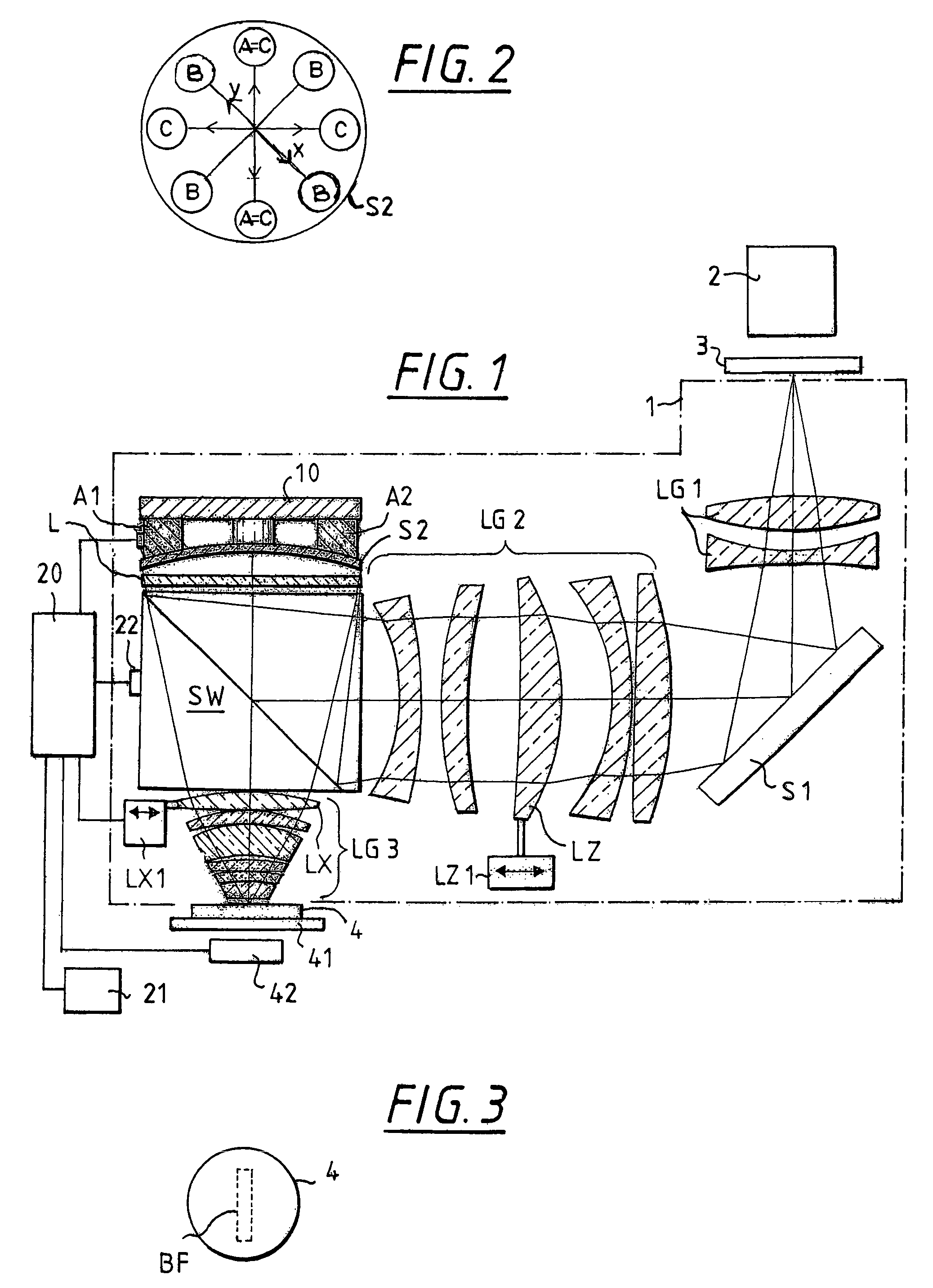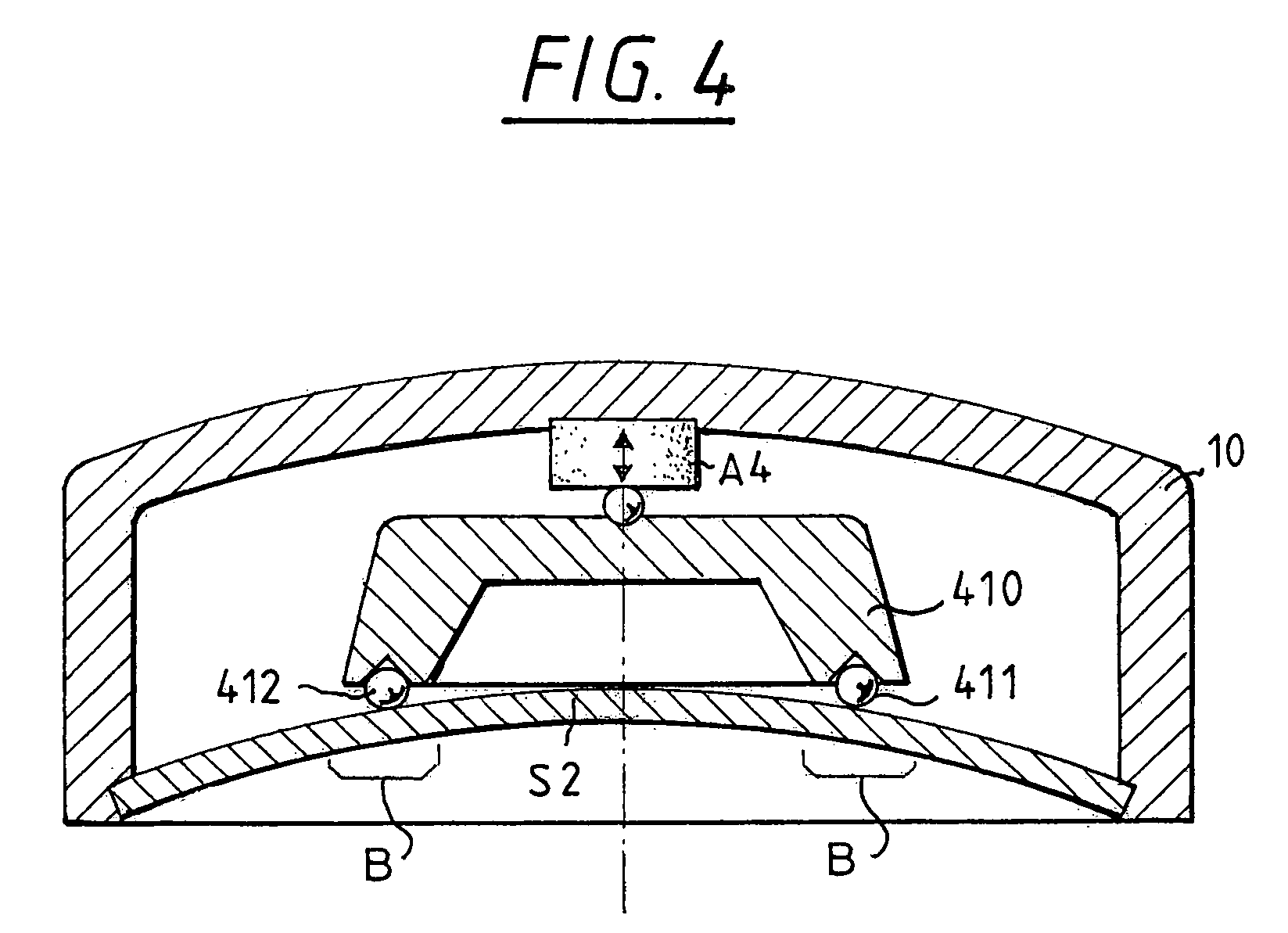Catadioptric projection objective with adaptive mirror and projection exposure method
a catadioptric and mirror technology, applied in the direction of optical radiation measurement, instruments, photomechanical equipment, etc., can solve the problem of severe asymmetry in the effect, and achieve the effect of improving the imaging quality
- Summary
- Abstract
- Description
- Claims
- Application Information
AI Technical Summary
Benefits of technology
Problems solved by technology
Method used
Image
Examples
Embodiment Construction
[0025]The core component of the catadioptric projection exposure device according to FIG. 1 is the catadioptric reduction objective 1, in the example shown the embodiment according to FIG. 1 and Table 1 of German Patent Application DE 196 16 922.4 (U.S. patent application Ser. No. 08 / 845,384), which is incorporated herein by reference.
[0026]This catadioptric reduction objective 1 includes a first lens group LG1, a plane deflecting mirror S1, a second lens group LG2, a beam splitter cube SW, a quarter wave plate L, a curved mirror S2 and a third lens group LG3. An illuminating device 2, a mask 3 and a wafer 4 in a holder 41 (wafer chuck) complete the projection exposure device, which is to this extent conventional.
[0027]The curved mirror S2 is newly embodied as an adaptive mirror. Actuators A1, A2 and a frame 10 are provided for this purpose. A sensor 42, e.g., a wavefront sensor, is provided in the region of the wafer 4, and measures a parameter for the imaging quality during exposu...
PUM
 Login to View More
Login to View More Abstract
Description
Claims
Application Information
 Login to View More
Login to View More - R&D
- Intellectual Property
- Life Sciences
- Materials
- Tech Scout
- Unparalleled Data Quality
- Higher Quality Content
- 60% Fewer Hallucinations
Browse by: Latest US Patents, China's latest patents, Technical Efficacy Thesaurus, Application Domain, Technology Topic, Popular Technical Reports.
© 2025 PatSnap. All rights reserved.Legal|Privacy policy|Modern Slavery Act Transparency Statement|Sitemap|About US| Contact US: help@patsnap.com



